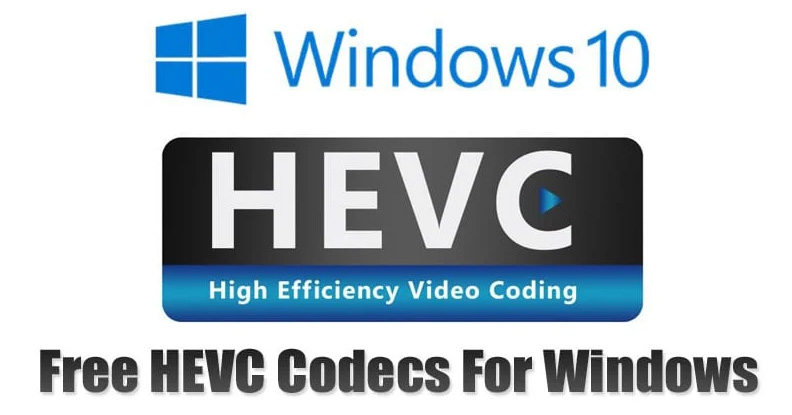Correct Install Process of HEVC Codecs on Windows 10 (for H.265 Video)
HEVC (High Efficiency Video Coding) is a video compression standard designed to significantly improve upon the data compression performance of its predecessor H.264/MPEG-4 AVC (Advanced Video Coding). Let’s look at HEVC by common users.

Table of Contents
- About High Efficiency Video Coding
- How HEVC Video Works on Windows 10
- How to Install the HEVC Codecs?
- In conclusion
About High Efficiency Video Coding
HEVC can compress video files up to twice as efficiently as H.264, allowing users to achieve higher quality videos while still maintaining a smaller file size. This makes it an ideal choice for streaming services, as it allows them to stream higher quality videos without using more bandwidth or increasing their data costs.
HEVC is quickly becoming a popular format for content delivery and is expected to be widely adopted in the near future. It is already supported by many popular streaming platforms such as YouTube, Netflix, and Amazon. HEVC is an important development for the video industry, providing users with access to higher quality video content without compromising file size or bandwidth usage.
With its excellent compression performance, it is expected that many streaming services will soon be using HEVC to deliver their videos. In addition, HEVC provides support for HDR (High Dynamic Range) video, allowing for even more vivid colors and greater detail in video content. As HEVC continues to be adopted by streaming services around the world, users can expect to see an improvement in the quality of their online video content.
How HEVC Video Works on Windows 10
HEVC offers up to 50% better compression than the previous H.264 standard, and Windows 10 has native support for HEVC playback through the Windows Media Foundation API. This makes it easier for developers to add support for HEVC videos in their applications without relying on third-party tools or plugins.
When playing an HEVC video, Windows 10 uses hardware acceleration if available on the device’s processor or graphics card. Hardware acceleration takes advantage of specialized hardware components built into modern processors and graphics cards to speed up certain types of tasks, such as decoding video files. Whenever an HEVC video is played on a computer with hardware acceleration, the processor and graphics card take over the decoding process instead of relying solely on the CPU. This can significantly reduce the load on the system, resulting in smoother playback and better performance.
HEVC videos require more powerful hardware than older formats such as H.264, which means some older systems may not be able to play them properly. However, if you have a newer system or laptop with a modern processor or graphics card, you should be able to play HEVC videos without any problems. Additionally, most devices released in the last few years come with support for hardware-accelerated HEVC decoding as well. If your device has this feature, it will automatically use it when playing back HEVC videos.
Overall, Windows 10 natively supports HEVC video playback without the need for third-party tools or plugins. This is great news for developers who want to add support for HEVC videos in their applications, as well as users who have a device that can take advantage of hardware acceleration to play back these files smoothly and efficiently. However, it’s important to keep in mind that older systems may struggle with playing HEVC files, so be sure to check your hardware specifications before attempting to play an HEVC file on your system.
How to Install the HEVC Codecs?
Once you have all the necessary components, you can begin the installation process:
- First, download and install your chosen version of the HEVC codecs. Make sure that you are using an appropriate version for your computer’s operating system.
- Once downloaded, double-click on it to launch the installer.
- Follow the instructions provided by the installer to complete the installation.
- Once the HEVC codecs have been installed, you may need to configure your media player or other video applications to use them.
- If so, open the settings menu of your media player and look for an option related to codecs or advanced settings.
- Select the option that allows you to choose which codecs are used for playback. Then, select the HEVC codecs from the list of available options and save your changes.
Once you have finished installing and configuring the HEVC codecs, you can begin watching videos in the new format. You may need to restart your media player or other video applications before they are able to recognize and play HEVC videos. You may also need to update your hardware drivers or media player software, if necessary.
In conclusion
By taking advantage of hardware acceleration and powerful modern processors, Windows 10 makes it easy to enjoy high-definition media content without sacrificing performance or battery life. For users with a compatible device, HEVC can be a great way to get the most out of their media files. So if you’re looking to take advantage of the latest video technology on Windows 10, make sure to check out HEVC!